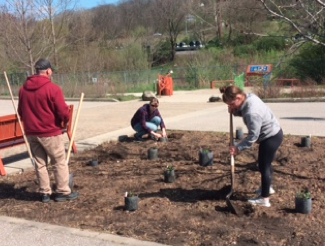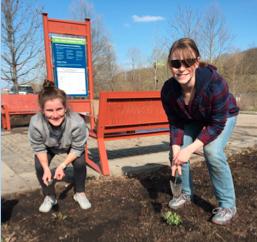2018, CINCINNATI, OH, UNITED STATES

While driving to and from school, Lily Melink would notice maintenance crews mowing the medians and berms of highways and local roads. She realized that mowing and maintaining acres of grass multiple times a year is responsible for releasing varying levels of CO2. Since the burning of fossil fuels is the main contributor to the high levels of CO2 in the atmosphere, Lily wanted to find an effective solution to reduce the number of times the grass had to be cut, and therefore reduce CO2 emissions. She decided to plant wildflowers in these spaces to replace grass because wildflowers only require maintenance once a year.
This project was inspired by programs for planting wildflowers in North Carolina and Texas that Lily had read about. When her environmental science teacher introduced the Caring For Our Watersheds program to her class, Lily decided that it would be the perfect opportunity to implement a similar project in Cincinnati. She read more about wildflowers and learned that they have more benefits to the environment than just reducing the amount of maintenance and therefore CO2. Wildflowers also help prevent erosion and provide habitat area for wild life such as pollinators.

Lily hopes that her project can educate the public on simple actions they can take to benefit the environment and increase community pride in their surroundings. She has already had positive feedback from the public, and says that “It doesn’t take much to make a positive impact on the environment or a community!